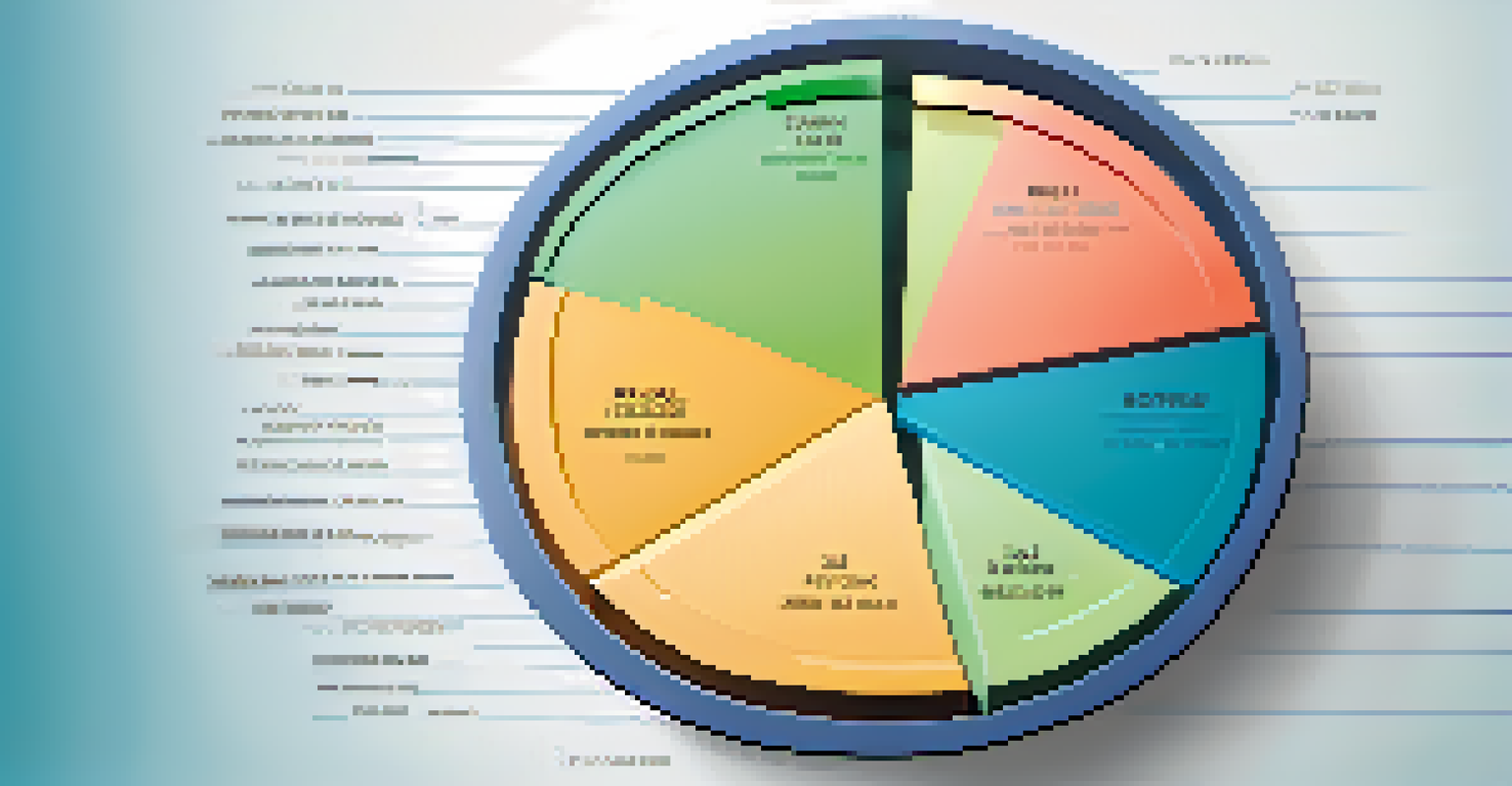Creating a Customized Asset Allocation Plan for You

Understanding Asset Allocation: The Basics You Need
Asset allocation is essentially how you divide your investments among different asset categories, like stocks, bonds, and cash. By mixing these assets, you can balance risk and return, which is crucial for reaching your financial goals. Think of it like creating a well-balanced meal; each food group contributes to your overall health in a unique way.
In investing, what is comfortable is rarely profitable.
The goal of asset allocation is to minimize risk while maximizing returns based on your individual risk tolerance and investment timeline. For instance, younger investors may lean towards more stocks since they have time to recover from market downturns, while those nearing retirement might favor bonds for stability. Understanding your needs is the first step to crafting your plan.
It's essential to remember that there's no one-size-fits-all approach to asset allocation. Your unique financial situation, goals, and preferences will dictate the best mix for you. So, let’s dive deeper into how you can create a customized plan that aligns with your aspirations.
Assessing Your Financial Goals and Risk Tolerance
Before you can create a personalized asset allocation plan, it’s crucial to assess your financial goals. Are you saving for retirement, a home, or your child's education? Each goal may require a different approach to investing, which will influence your asset allocation strategy.

Equally important is understanding your risk tolerance, which is your ability and willingness to endure market fluctuations. Some people are comfortable with taking risks for potentially higher returns, while others prefer a conservative approach. Consider this like choosing a roller coaster: the thrill-seekers want the wild ride, while others may opt for the gentle carousel.
Customize Your Asset Allocation Plan
Understanding your financial goals and risk tolerance is crucial for creating a personalized asset allocation strategy.
To evaluate both your goals and risk tolerance, taking the time to reflect on your financial situation is key. You might find it helpful to write down your goals and assess how you feel about market risks. This self-awareness will steer your asset allocation decisions in the right direction.
The Importance of Diversification in Your Plan
Diversification is a fundamental principle of investing that involves spreading your investments across various asset classes to reduce risk. Imagine you’re planting a garden; if you only plant one type of flower, a pest could wipe out your entire garden. However, a variety of plants can withstand challenges better.
The stock market is filled with individuals who know the price of everything, but the value of nothing.
In the context of asset allocation, diversification means not putting all your eggs in one basket. By investing in a mix of stocks, bonds, real estate, and other assets, you can help protect your portfolio from significant losses if one asset class falters. It’s about finding that sweet spot where your risk is minimized while still aiming for growth.
When creating your asset allocation plan, consider how much you want to diversify. Too little diversification increases risk, while too much can dilute potential returns. Striking the right balance is the key to a healthy investment portfolio.
Choosing the Right Investment Vehicles for Your Needs
Once you have your goals, risk tolerance, and diversification strategy in mind, it’s time to choose the right investment vehicles. This could be stocks, mutual funds, ETFs, or bonds, each offering unique benefits and risks. Selecting the right mix is like choosing the right tools for a DIY project; using the right tool can make all the difference.
For example, if you prefer a hands-off approach, mutual funds or ETFs might be ideal since they offer built-in diversification and are managed by professionals. On the other hand, if you’re more hands-on, individual stocks may suit you better, allowing for direct control over your investments. Think about how involved you want to be in managing your portfolio.
Diversification Reduces Investment Risk
Spreading your investments across different asset classes helps protect your portfolio from significant losses.
Ultimately, the key is to align your investment choices with your overall asset allocation strategy. This ensures that each vehicle fits neatly within your plan, helping you work toward your financial goals without unnecessary stress.
Regularly Reviewing and Rebalancing Your Portfolio
Creating your asset allocation plan isn’t a one-time event; it requires ongoing attention. Markets change, and so do your personal circumstances, which is why regularly reviewing your portfolio is essential. Think of it as maintaining a car; regular check-ups ensure everything runs smoothly.
Rebalancing is the process of realigning your portfolio back to your desired asset allocation. If one asset class performs exceptionally well, it could make up a larger percentage of your portfolio than intended, increasing your risk exposure. By rebalancing, you sell off excess gains in one area and reinvest in others to maintain your risk level.
Setting a schedule for reviews—like quarterly or annually—can help keep your portfolio aligned with your goals. This proactive approach ensures you’re on track and allows you to make necessary adjustments based on performance and changes in your life.
Considering Tax Implications in Your Asset Allocation
When crafting your asset allocation plan, it’s important to consider the tax implications of your investment choices. Different asset classes are taxed differently, and understanding this can help you keep more of your hard-earned money. Think of taxes like a toll on your investment highway; the less you pay, the more you have to keep moving forward.
For instance, long-term capital gains from investments held for over a year are typically taxed at a lower rate than short-term gains. Additionally, tax-advantaged accounts like IRAs or 401(k)s can offer significant benefits when it comes to retirement savings. Understanding how to leverage these accounts can enhance your asset allocation strategy.
Regular Reviews Keep Your Portfolio Healthy
Consistently reviewing and rebalancing your portfolio ensures it aligns with your goals and adapts to market changes.
Consulting with a financial advisor can provide insights into how taxes affect your investment choices and overall strategy. By being mindful of tax implications, you can optimize your asset allocation for better long-term results.
Seeking Professional Guidance for Your Asset Allocation
Navigating the complexities of asset allocation can be challenging, and seeking professional guidance may be beneficial. Financial advisors can provide personalized insights and strategies tailored to your unique situation, helping you make informed decisions. Think of them as navigators on your financial journey, helping you steer clear of potential pitfalls.
When selecting a financial advisor, consider their expertise, approach, and fees. Look for someone who aligns with your investment philosophy and understands your specific financial goals. A good advisor will not only help you create an asset allocation plan but also support you through the ups and downs of the market.

Remember, you don’t have to do this alone. Engaging a professional can provide peace of mind and a clearer path toward achieving your financial dreams.